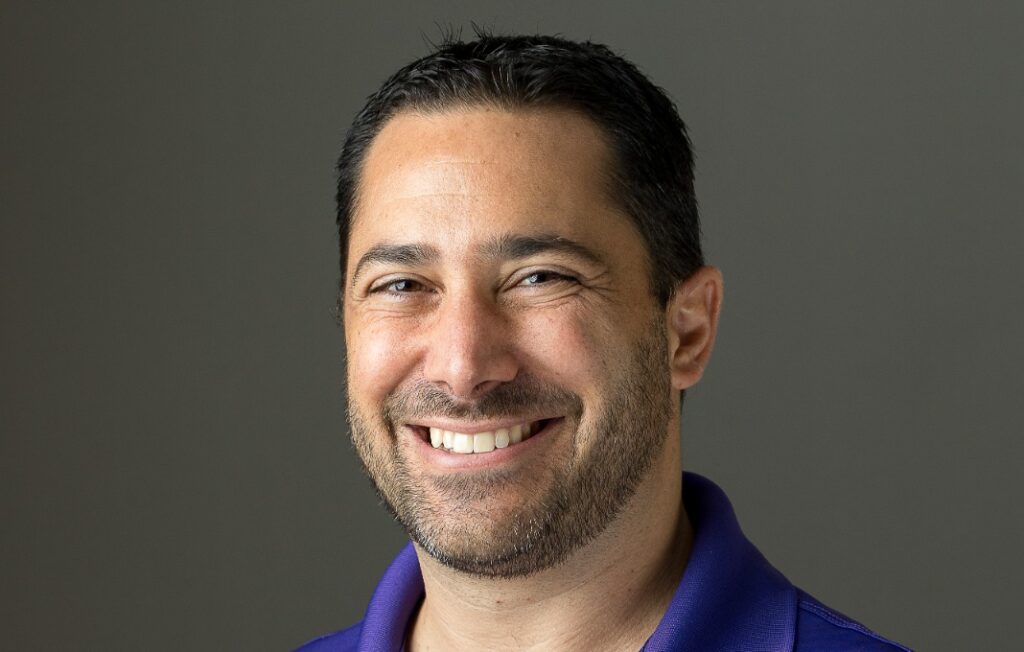Few trends have gripped imaginations—and stoked fears—among business leaders like the Great Resignation, the rapid and ongoing churn of employees abandoning companies, either for greener pastures at competitors or for something else entirely, such as entrepreneurship, education or leaving the working world in favor of family or retirement.
The quits rate, the measure of employees leaving companies, is at a 20 year high (as far back as U.S. data goes), and although it has yet to surpass historical highs in the aftermath of World War II and during the 1970s, it is nevertheless throwing companies into chaos. Surging turnover has driven wages up and caused C-Suite consternation as companies struggle to maintain staffing levels—particularly of highly skilled, high demand talent—during a period of torrid economic growth.
In January, BlackRock CEO Larry Fink noted in his annual CEO letter that “no relationship has been changed more by the pandemic than the one between employers and employees,” and argued that employee turnover is a good thing in that it “demonstrates their confidence in a growing economy.” At the same time, Fink cast shade upon companies that are struggling to retain talent, writing that while BlackRock’s “research shows that companies who forged strong bonds with their employees have seen lower levels of turnover and higher returns through the pandemic,” those “companies not adjusting to this new reality and responding to their workers do so at their own peril. Turnover drives up expenses, drives down productivity, and erodes culture and corporate memory.”
High turnover and a competitive hiring environment put pressure on CHROs on a variety of fronts. On one side, they are expected to control labor costs and beat the competition to bring in top prospects. On the other, they are also charged with retaining employees, particularly those with high demand technical and knowledge skills. This latter task—keeping key employees in the company—has become markedly more difficult and the old playbook no longer works. Indeed, many CHROs are making a mistake by “trying to retain a broken way of thinking about talent, which is this model of retention,” says HR consultant and former LinkedIn CHRO Steve Cadigan. “We used to try to build stable, predictable, reliable outcomes, but what you have to do now is deliver success in an unpredictable environment.”
Transactional approaches to retention that CHROs may have relied upon in the past, things like increasing compensation or offering other perks or benefits, no longer move the needle for high demand workers. In fact, McKinsey noted in recent research that transactional approaches now typically fail precisely because they’re transactional. “If your only response to attrition is to raise compensation,” the report says, “you’re unwittingly telling your people that your relationship with them is transactional and that their only reason to stay with you is a paycheck. Your very best people will always have a better ash offer somewhere else.”
In other words, things like pay and benefits are, at best, table stakes. “You’re not going to win the transactional retention game,” says State Farm CHRO Michael Trout. “If you’re trying to battle for top talent by offering an additional 401k, you probably already lost that battle.”
The key now, says Anat Lechner, Clinical Associate Professor of Management and Organizations at New York University Stern School of Business, is understanding what motivates employees to leave. “We’ve seen enough to know that people are putting their keys on the table and walking away, not necessarily to new jobs, but because they have different ways they want to experience their work life.” Employees who were, if not content, at least willing to put up with things such as commuting or not receiving the types of benefits they believe they deserve have lost patience with business as usual.
“This sort of abuse is what people are turning their backs on,” Lechner says, noting that “for people who cannot afford to resign, we have the highest level of strikes since World War II in some sectors.” There were close to 200 labor strikes globally in 2021, encompassing everyone from carpenters to nurses to Kellogg’s employees. And historically non-union businesses, such as Starbucks and Amazon, are increasingly facing unionization efforts.
Fundamentally, no company is retaining their best employees because of what they pay them or by adding perks, and offering a raise will rarely cause someone to stay. “We all remember the days of office perks like Ping-Pong tables and snacks,” says Art Mazor, global leader of human capital practice at Deloitte. Now, the companies that are outperforming in terms of attracting and retaining talent globally are those “organizations who walk the walk on social justice issues, who invest in understanding the ways in which their workers prefer to work and not just because it makes them happy but because it makes them more productive and allows them less friction at work.”
Mazor notes that 18 months ago, 50 percent of respondents to a Deloitte survey said the number one reason they’d consider leaving a job was dissatisfaction with compensation, whereas now a great percentage of workers cite personal ethics as their number one factor. It is increasingly apparent that companies who are only concerned with retention, and CHROs primarily focused on tactics, are missing a broader trend and the opportunities it presents.
Indeed, Trout says that “if people are focusing on retention today, they probably missed the opportunity to actually impact it right now.” Companies that are struggling with retention in the current labor environment were likely already lagging on understanding who their critical workers were and what they needed to flourish long before the pandemic.
“In our view, if you look at this as a Great Resignation, you’re actually only looking at the outcome or the apparent, superficial symptom,” says Mazor. “What’s really happening is a much bigger story; it’s a radical rethinking of our relationship to work.” Mazor argues that what is occurring right now is actually a Great Reimagination, and while it is being driven by employees who are experiencing wage growth, increased flexibility thanks to remote work, and shifting life priorities—all accelerated by the pandemic—companies can thrive in this labor environment.
“The pandemic has served as the greatest opportunity of a lifetime to build a better model of work,” Cadigan argues.
Out With the Old
Lechner, who prefers to talk about the Great Reshuffle, believes that the trend is a “post-traumatic” realization born out of the first phase of the pandemic that is driving “people to look more closely at the purpose of work,” similar to what took place post-World War II, when quits rates were similarly surging. During that period, unions gained strength and workers gained greater benefits and wages as a result of negotiations over the next three decades until the 1973 oil embargo shook the foundation of the economy. “Every time society experiences this type of defining moment, rethinking follows,” Lechner says. “Now, it’s the survival of the fittest again. Those companies that cannot bring value to employees—work conditions, meaningfulness, security—will find it difficult to retain good talent.”
The reevaluation of work caused by the pandemic is further accelerated by social, economic and especially technological trends that were already at work before the virus began to spread globally in the early months of 2020. The evolution of technology, particularly the rise of automation and AI, are driving a redistribution of labor opportunities at the same time that workers are examining the purpose of their work.
Because of these emerging technologies, irrespective of the pandemic, “there is a subsection of society that’s enjoying amazing opportunities, and retention is becoming more difficult with those people.” Lechner notes that a line worker in a Kellogg’s factory and an AI engineer have radically different experiences and circumstances when considering leaving a job. For the line workers, increasingly endangered by AI and automation, unionization and collective action are the logical course, while high-demand tech and knowledge workers are able to strike out on their own as hired guns or shop for better offers.
At this moment in time, the most important thing CHROs worried about retention can be doing, Trout argues, is understanding “what skills are critical to your organization, critical to your customers and critical to your shareholders,” and then analyzing the data about the people who hold those critical skills, both inside and outside of their organizations. At State Farm, investments professionals, analytics professionals and actuaries are key employees, as they are—and have been for years—at any major financial services company. (Trout also notes that one of the most competitive hiring sectors right now is for talent acquisition representatives.) Consequently, “what you really do is focus on the hot skills and the skills that are critical to operating your business and meeting your business objectives. That’s where your retention really is critical. I think of retention in that way, which really narrows the field significantly.”
“Five years from now we will all wake up to reality where machines took over a bunch of jobs,” Lechner says. “Very many people are going to go home,” perhaps permanently, because “retraining people is complicated.” Meanwhile, new frontiers such as the metaverse or AI mean new opportunities for individuals with the skills to seize them. “If you are a Kellogg’s employee, you are not virtual first, you are physical only. No one will have an interest in retraining you and retaining you.” Virtual jobs are on the rise and physical jobs are endangered, even if companies may face a crunch for front-line workers in the short-term.
In this context, with many jobs becoming obsolete due to automation and AI and knowledge workers becoming increasingly valuable and necessary for companies to compete, the old models of retention are fundamentally broken. “Retention has nothing to do with the Great Resignation but everything to do with the sexy fields that are emerging and where there is a shortage of people with abilities,” Lechner argues. For those core employees, unlike many frontline workers who can be replaced by automation and AI, retention is a greater concern.
How an AI, automation and remote work driven world might operate is complicated in the near term. While many white collar and previously office-based companies and professions may already be deep into the switch, for others, the process is just beginning. “It’s a lot more challenging when you talk to our clients who have workers in the manufacturing space, the healthcare space, the retail space, the hospitality and restaurant space,” says Mazor.
In the immediate term, those industries still rely on actual human beings to carry out many (if not most) tasks, and CHROs are increasingly experimenting with things such as flexible shifts—starting teams of workers at flexible times at a warehouse or factory, rather than having rigid shifts—or providing more flexibility about location. “Flexibility is something that everybody is using,” Trout says, so while it’s an important element of an effective retention policy, it may not be enough by itself.
The companies that are succeeding in retaining employees are those that are taking what some CHROs might “feel to be a bit of a risky step,” Mazor says, which is “actually soliciting insight from the workforce to understand what their needs are before jumping to the more typical approach of setting out some philosophies at the leadership level.”
Executives, according to Mazor, need to “stop trying to predict a future and set a solid game plan with solutions for that future all at once.” And CHROs need to pay particular attention to how their companies’ workforces are internally segmented; there is unlikely to be a one-size-fits-all option. Instead, CHROs should work to “develop an ongoing culture of experimentation.”
Cadigan notes that as the pace of innovation increases, length of tenure is increasingly not just a poor measure of a company’s success, but may actually indicate an environment that is less conducive to creativity, because long-tenured employees are more likely to become locked into old ways of doing things. “Software is all about trial and error, and that feeds into culture a lot more easily than older industries, which is why hospitality is getting slaughtered right now,” he says.
Beyond Retention
Long-term trends like automation and the rise of AI may mean that retention as a concept will become increasingly outdated except for core employees at companies, who will become simultaneously more critical and more difficult to keep. For those workers, Lechner says the best way to retain them “is to give them a very long runway and a purpose to follow. It has to be some beautiful combination of purposefulness and meaningfulness and autonomy.”
The most successful organizations right now—and going forward—will be those that focus their recruiting efforts on finding prospective employees who can learn key skills, Cadigan says, rather than competing on the open market for a limited pool of high demand workers. And companies will have to provide key employees stretch assignments and creative work—a pathway for growth via learning, experimentation and autonomy, in other words—to retain them. The primary factors that drive whether key employees, such as engineers, remain at a company are whether they see the work they are doing as something meaningful that makes a difference in the world, whether they “work close to or around luminaries” and whether they feel like they are really valued. Most important, Cadigan says, is to remember that “the most vulnerable time for technical talent is when they’ve finished a project, because now they’ve got a sense of completion,” so companies need to constantly provide a new flow of exciting, challenging projects to key workers.
Yet the bulk of workers will not fall into this category where retention is vital to the success of the company. CHROs need to look beyond attracting and retaining employees and instead focus on building ecosystems around their companies. In practical terms, this will mean relying more on contractors, consultants, outsourced services and strategic partnerships, rather than hiring to fill roles. CHROs “can actually shrink their company size to a core and then rely on strategic partners to supplement all the value,” Lechner says. “If I have lots of strategic partners, I can outsource more and only rely on my core employees.”
The “typical mantra” within companies for the past three decades or more has been “attract, develop, retain,” Mazor says, and organizations have built systems around that pattern. Yet although those systems still exist, the pattern no longer works. Instead, he argues that CHROs need to focus on accessing, curating and engaging talent, wherever it is. And, according to Lechner, CHROs will be able to concentrate on high performers—the 10 percent of employees who drive 90 percent of value— and “get rid of the 90 percent long tail.”
In fact, the very things that may help core employees perform well are also the things that may entice them to remain with a company for the long haul. “The things that really matter are that your employees have meaningful relationships where they work,” Trout says. “Are there people that they actually like to be around and are energized by?” And can employees see themselves within the mission and also gain value from the mission of the company? If the answer is no, Trout says, that person is unlikely to remain because they’re not going to form relationships with other employees.
Critically, executives must examine whether the mission of the company aligns with the type of people that they want working at it. “Culture is not based on where you work,” Trout says. “If your culture is a building, that’s pretty temporary and shallow.” Instead, the key to a culture that will help retain talent is vulnerability within leadership and an emphasis on storytelling about what the company does and why it does it. “If people can’t form meaningful relationships, and if companies can’t form meaningful relationships, then they’re going to have separation problems.”








